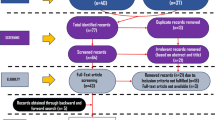Abstract
This chapter tries to find answers to the questions whether the fingerprint recognition is really so reliable and secure. The most biometric systems based on fingerprint recognition have very low error rates, but are these error rates really telling us everything about the quality of such a biometric system? What happens when we use spoofs to deceive the biometric system? What happens when the genuine user has any kind of skin disease on his fingertips? And could we acquire a fingerprint with acceptable quality if there are some distortions on a finger or there are some environmental effects influencing the scanning technology? Reading this chapter brings you an introduction of preparation of finger fakes (spoofs), spoof detection methods, summarization of skin diseases and their influence on papillary lines, and finally the environmental effects are discussed at the end.
Access this chapter
Tax calculation will be finalised at checkout
Purchases are for personal use only
Similar content being viewed by others
References
Ambalakat P (2005) Security of biometric authentication systems. In: 21st Computer Science Seminar, SA1-T1–1 (2005), p 7
Daugman J (2001) Biometric Decision Landscapes, University of Cambridge, p 13
Drahanský M (2011) Fingerprint Recognition Technology—Related Topics. Saarbrücken, DE, LAP, 2011, p 172. ISBN 978-3-8443-3007-6
Drahanský M, Funk W, Nötzel R (2006) Liveness detection based on fine movements of the fingertip surface. In: IEEE—The West point workshop, West Point, New York, USA, pp 42–47. ISBN 1-4244-0130-5
Drahanský M, Hejtmánková D (2010) New experiments with optical liveness testing methods. J Inf Hiding Multimedia Signal Process 1(4):301–309. ISSN 2073-4212
Habif TP (2004) Clinical dermatology, 4th edn. Mosby, China, p 1004. ISBN 978-0-323-01319-2
Habif TP (2004) Clinical dermatology, 4th edn. Mosby, China, p 1004. ISBN 978-0-323-01319-2
Jain AK, Flynn P, Ross AA (2008) Handbook of biometrics. Springer, p 556. ISBN 978-0-387-71040-2
Kanich O (2014) Fingerprint damage simulation—A simulation of fingerprint distortion, damaged sensor, pressure and moisture, LAP LAMBERT Academic Publishing GmbH & Co. KG, p 57. ISBN 978-3-659-63942-5
Kluz M (2005) Liveness testing in biometric systems. Master Thesis, Faculty of Informatics, Masaryk University Brno, CZ, p 57
Lodrová D (2013) Security of biometric systems. Dissertation thesis, FIT BUT, Brno (CZ), p 152
Maltoni D, Maio D, Jain AK, Prabhakar S (2009) Handbook of fingerprint recognition, 2nd edn. Springer, p 494. ISBN 978-1-84882-253-5
Malý T (2013) Detekce živosti prstu pomocí osvětlení různé vlnové délky (Detection of Finger Liveness using Illumination with Different Wavelengths), Diploma thesis, FIT BUT, Brno (CZ), p 59
Martinsen ØG, Grimnes S, Haug E (1999) Measuring depth depends on frequency in electrical skin impedance measurements. In: Skin research and technology, No. 5, pp 179−181. ISSN 0909-752X
Matsumoto T, Matsumoto H, Yamada K, Hoshino S (2005) Impact of artificial “Gummy” fingers on fingerprint systems. In: Proceedings of SPIE, Optical Security and Counterfeit Deterrence Techniques IV, vol 4677, p 11
Rowe RK (2008) Spoof Detection. Summer school for advanced studies on biometrics for secure authentication. Italy, Alghero, p 43
Schuckers S, Hornak L, Norman T, Derakhshani R, Parthasaradhi S (2003) Issues for liveness detection in biometrics. West Virginia University, Presentation, CITeR, p 25
Tan B, Lewicke A, Schuckers S (2008) Novel methods for fingerprint image analysis detect fake fingers. In: SPIE, p 3. doi:10.1117/2.1200805.1171
Organism Identifying Method and Device. US Patent 6,314,195, Nov 2001
Wolff K, Johnson RA, Suurmond D (2005) Fitzpatrick’s Color Atlas and Synopsis of Clinical Dermatology, 5th Edition. McGraw-Hill, USA, p 1085. ISBN 0-07-144019-4
Zhao Q, Jain AK, Paulter NG, Taylor M (2012) Fingerprint image synthesis based on statistical feature models. In: 2012 IEEE Fifth International Conference on Biometrics: Theory, Applications and Systems (BTAS). IEEE, pp 23–30
Acknowledgments
This work was supported by The Ministry of Education, Youth and Sports of the Czech Republic from the National Programme of Sustainability (NPU II); project “IT4Innovations excellence in science”—LQ1602; “New solutions for multimodal biometrics—enhancement of security and reliability of biometric technologies”—COST LD14013 (CZ); “Reliability and Security in IT”—internal Brno University of Technology project FIT-S-14-2486 (CZ).
Author information
Authors and Affiliations
Corresponding author
Editor information
Editors and Affiliations
Rights and permissions
Copyright information
© 2017 Springer International Publishing AG
About this chapter
Cite this chapter
Drahanský, M., Kanich, O., Březinová, E. (2017). Challenges for Fingerprint Recognition—Spoofing, Skin Diseases, and Environmental Effects. In: Tistarelli, M., Champod, C. (eds) Handbook of Biometrics for Forensic Science. Advances in Computer Vision and Pattern Recognition. Springer, Cham. https://doi.org/10.1007/978-3-319-50673-9_4
Download citation
DOI: https://doi.org/10.1007/978-3-319-50673-9_4
Published:
Publisher Name: Springer, Cham
Print ISBN: 978-3-319-50671-5
Online ISBN: 978-3-319-50673-9
eBook Packages: Computer ScienceComputer Science (R0)




